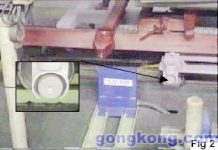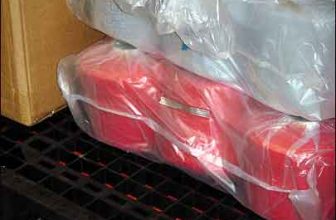
Application of EMS Company’s HMS820 Passive Reader in South Africa Toyota Company
[ad_1]
Toyota Motor South Africa, established in 1961, is a major car manufacturer and importer in the market, mainly dealing in cars and their parts. In 2000, Toyota sold a total of 100,000 vehicles with a turnover of 860 million U.S. dollars.
In 2000, South Africa’s Toyota Motor Corporation decided to introduce an automated tracking system (ATS) into their manufacturing equipment in order to strengthen their market leadership. The old-fashioned manufacturing information acquisition card seems inadequate to use and lacks real-time performance. Toyota’s production layer, inventory management and financial systems require real-time online engineering monitoring. The old-fashioned information card only contains product manufacturing information required by assembly technicians at a certain station. The system does not have the ability to quickly obtain real-time data tracking capabilities such as manufacturing information, item location, problem and failure analysis, so cars on the production line will not move faster than the written plan, and the inventory will be adjusted before leaving the factory due to manual processing of the work plan. With a backlog of 3 days in the product distribution field, this information tracking method is very slow, error-prone, and lacks the ability to provide forward-looking plans for future product production. Toyota recognizes that what they need is an automated tracking system that can collect data from the beginning of each car to different production processes and along the distribution channels across the country.
After examining all available automated tracking systems, South Africa Toyota believes that the RFID (Radio Frequency Identification) system can meet the indicators they require. RFID products can provide tracking capabilities (such as barcodes) that other systems cannot achieve, and can be used normally in the harsh environment of automobile manufacturing, such as dust, oil, and high temperature. In addition, the RFID code carrier does not allow the straight line of the bar code to be visible, which allows the RFID code carrier to be flexibly placed in different positions to provide different solutions. .

South Africa Toyota selected several RFID systems for testing. According to the test results, most of the RFID systems either failed in the application test or exceeded their budget. Only the EMS products passed Toyota’s rigorous tests and met their budget requirements.

In order to meet their tracking needs, Toyota installed 14 EMS HMS820 passive readers, one MM80 MUX32 bus module and 150 HMS150HT high-temperature code carriers. HMS820 reads and writes the code body information of each transmission position. MM80 provides communication interface between HMS820 and painting line. The HMS150HT is installed on the rack of the mobile car in the car painting workshop. As shown in the figure, it provides a mobile database for each car. In the heating furnace for painting pretreatment, the code carrier will withstand a high temperature of 215°C. In addition, the load The use of the code body has a dual purpose. It can enable Toyota to track the data of all points in the painting process in real time, and provide data for tracking and maintaining each car. This can provide the correct plan for daily maintenance and reduce unnecessary downtime.
[ad_2]




